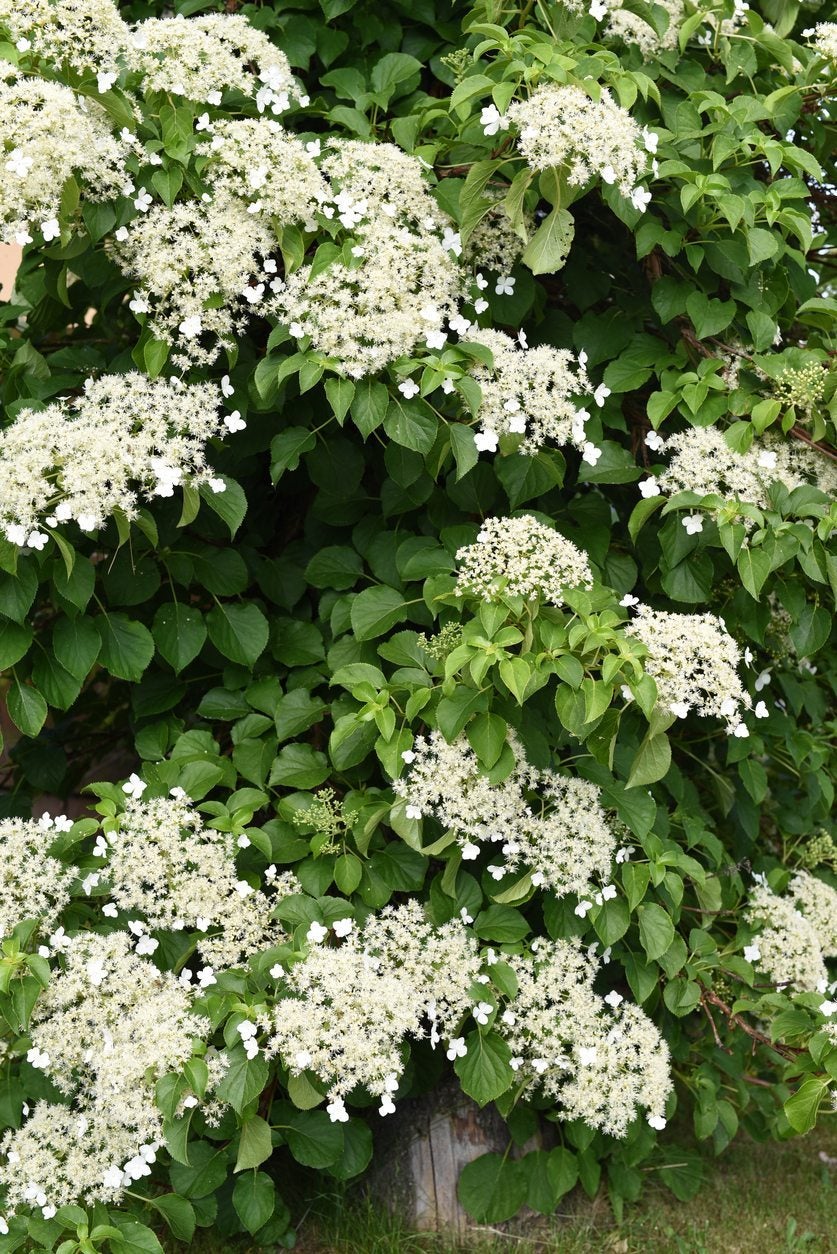Evergreen Hydrangea Care – Growing An Evergreen Climbing Hydrangea


If you love your garden hydrangea plants but would like to try a new variety, take a look at Hydrangea seemanii, evergreen hydrangea vines. These hydrangeas climb up trellises, walls, or trees but can also be grown as shrubs. If you are considering growing an evergreen climbing hydrangea, or just want more evergreen climbing hydrangea information, read on.
Evergreen Climbing Hydrangea Information
The Hydrangea seemanii is a climbing hydrangea vine that can get 30 feet (9 m.) tall. It has big, thick, rounded leaves that look more like they belong on an evergreen magnolia than a hydrangea. They contrast beautifully with the creamy blossoms. The glossy leaves stay on the hydrangea vine year-round, while the flowers appear in summer, attracting butterflies and bees. The copious amounts of ivory white flowers emerge as tight ivory buds that look like duck eggs. They open into lacecaps. Evergreen hydrangea vines thrive in USDA plant hardiness zones 7 through 10. They are native to Mexico and Central America. According to evergreen climbing hydrangea information, these vines cling to their support with aerial roots. This is one vine that does not harm walls or masonry.
How to Grow Evergreen Hydrangeas
One other unusual feature of these vines is that they thrive in shade. You can start growing an evergreen climbing hydrangea in dappled sunshine, partial shade, or even full shade. However, they flower more in some sun. The vines aren’t picky about the soil acidity either. They will grow in slightly acidic, neutral, or slightly alkaline soil. They do prefer rich, well-drained soil. You’ll need to remember its one absolute requirement, however: sufficiently moist soil. If you start growing an evergreen climbing hydrangea, never let the soil dry out completely. Irrigating evergreen hydrangea vines regularly is a very important part of their care. If the soil is allowed to dry, your vine may suffer or even die. Give your shrub the evergreen hydrangea care it needs. You’ll get a wonderful hydrangea plant that makes your garden look great all year long.
Sign up for the Gardening Know How newsletter today and receive a free copy of our e-book "How to Grow Delicious Tomatoes".

Teo Spengler is a master gardener and a docent at the San Francisco Botanical Garden, where she hosts public tours. She has studied horticulture and written about nature, trees, plants, and gardening for more than two decades, following a career as an attorney and legal writer. Her extended family includes some 30 houseplants and hundreds of outdoor plants, including 250 trees, which are her main passion. Spengler currently splits her life between San Francisco and the French Basque Country, though she was raised in Alaska, giving her experience of gardening in a range of climates.